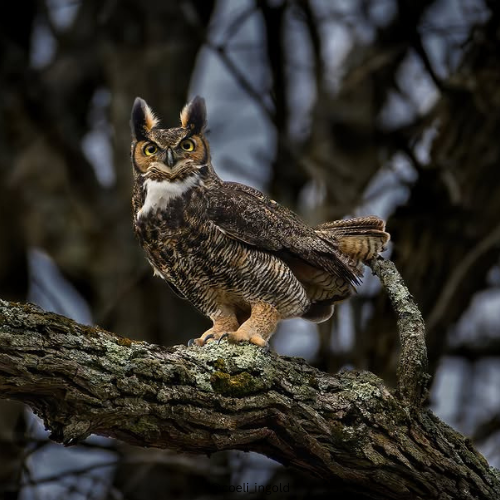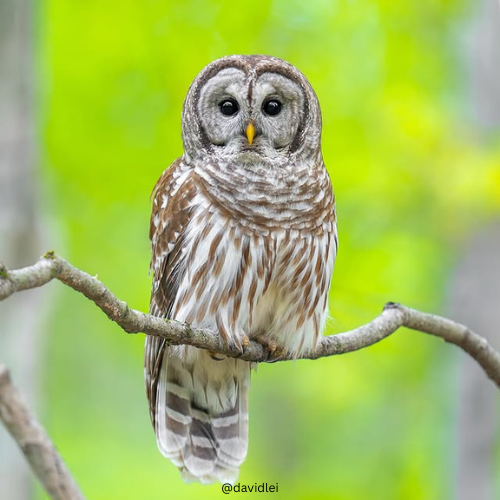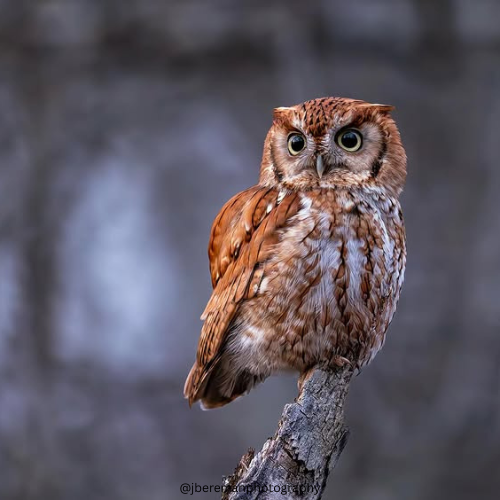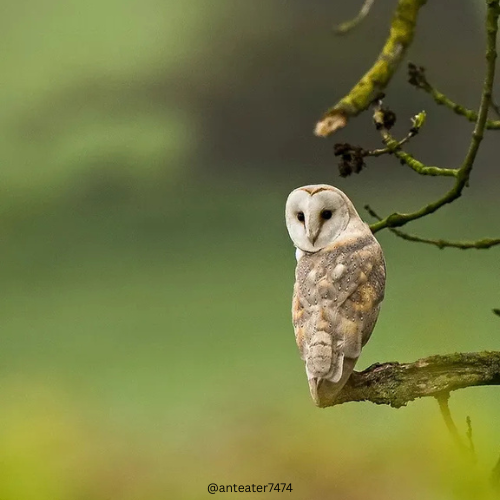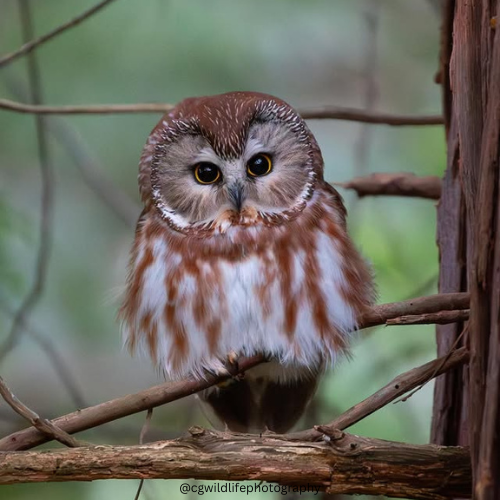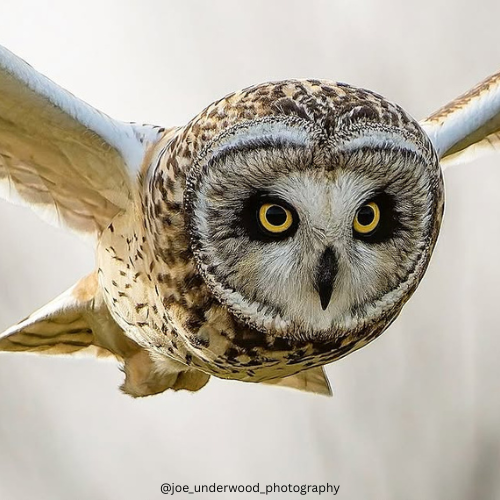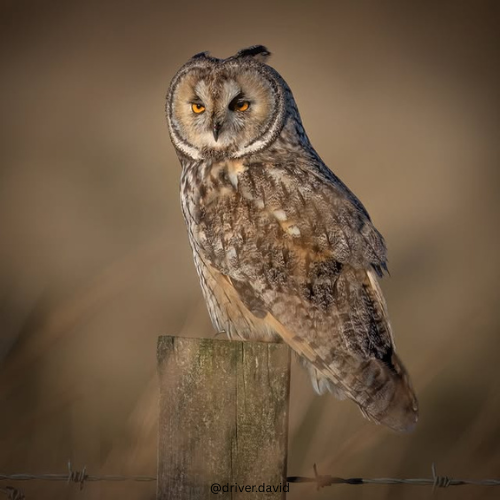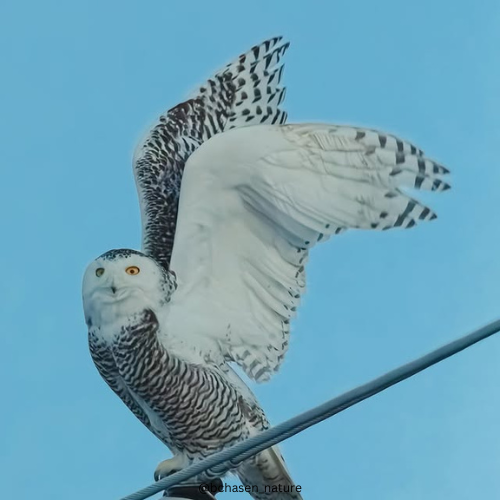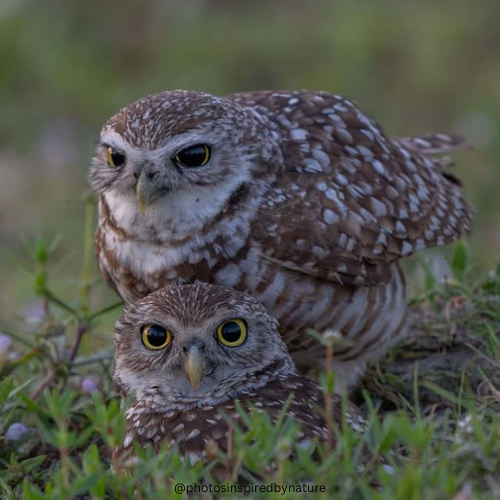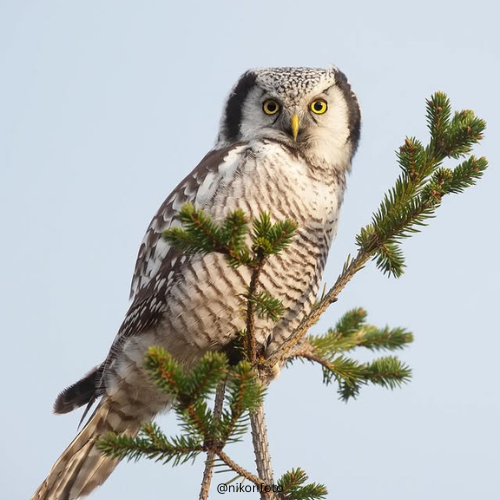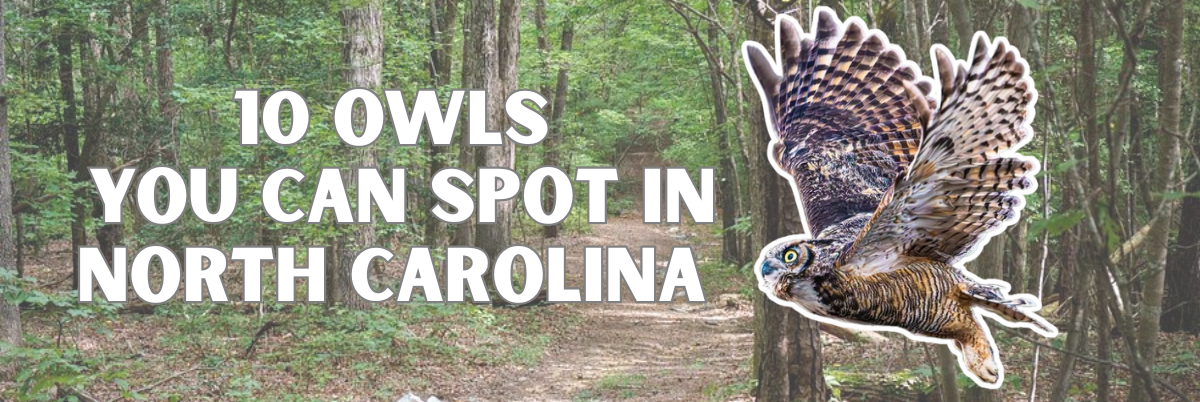
By Avian Feathers Team
Published July 2025
North Carolina is full of forests, wetlands, and quiet countryside, perfect places for owls to thrive. These mysterious nighttime birds are often heard before they’re seen. Some are common year-round, while others are rare winter visitors.
1. Great Horned Owl
The Great Horned Owl is one of the largest and most powerful owls in North Carolina. With its ear-like tufts, yellow eyes, and deep hooting call, it’s a classic owl seen in forests, suburbs, and open country. It’s active at dusk and can take down prey larger than itself.
Size
Length: 18–25 in (46–64 cm)
Wingspan: 39–57 in (99–145 cm)
Weight: 2–5.5 lbs (0.9–2.5 kg)
Scientific Name: Bubo virginianus
2. Barred Owl
Famous for its “Who cooks for you?” call, the Barred Owl lives in wooded swamps and forests. It has a round head, dark eyes, and vertical brown bars on its chest. It’s most active at night but often calls during the day too.
Size
Length: 16–25 in (40–63 cm)
Wingspan: 38–49 in (96–124 cm)
Weight: 1–2.5 lbs (0.5–1.1 kg)
Scientific Name: Strix varia
3. Eastern Screech-Owl
This small, camouflaged owl comes in gray or reddish-brown and blends perfectly with tree bark. Eastern Screech-Owls are common in both rural and suburban areas. Their call sounds like a soft, descending whinny.
Size
Length: 6.3–10 in (16–25 cm)
Wingspan: 18–24 in (46–61 cm)
Weight: 4–8.6 oz (120–244 g)
Scientific Name: Megascops asio
4. Barn Owl
With its heart-shaped face and ghostly appearance, the Barn Owl is both beautiful and eerie. It prefers open fields and farmlands, nesting in barns, silos, or tree cavities. Its screeching call is unmistakable.
Size
Length: 12.5–16 in (32–41 cm)
Wingspan: 31–37 in (80–95 cm)
Weight: 14–24 oz (400–700 g)
Scientific Name: Tyto alba
5. Northern Saw-whet Owl
This tiny owl is hard to find but known for its high-pitched, repetitive tooting call. It prefers dense forests and is more often heard than seen. It has a round face and bright yellow eyes.
Size
Length: 7–8.5 in (18–22 cm)
Wingspan: 17–22 in (43–56 cm)
Weight: 2.3–5.3 oz (65–150 g)
Scientific Name: Aegolius acadicus
6. Short-eared Owl
Often active during dawn and dusk, Short-eared Owls prefer open fields and marshes. They fly with slow, moth-like wingbeats and are sometimes seen gliding low over grasslands. Their facial disks are pale and round.
Size
Length: 13–17 in (34–43 cm)
Wingspan: 33–43 in (85–110 cm)
Weight: 7.3–16.8 oz (206–475 g)
Scientific Name: Asio flammeus
7. Long-eared Owl
Slender and secretive, Long-eared Owls are rarely seen but sometimes roost in groups during winter. They have tall ear tufts, orange facial disks, and deep hoots. They favor dense woods near open hunting areas.
Size
Length: 6–7 in (15–18 cm)
Wingspan: 14–16 in (36–41 cm)
Weight: 2–2.5 oz (56–70 g)
Scientific Name: Glaucidium gnoma
8. Snowy Owl
This stunning white owl is a rare winter visitor. Snowy Owls come down from the Arctic during cold months and are usually seen in open coastal areas, fields, or airports. Males are mostly white, while females have more dark markings.
Size
Length: 20–28 in (51–71 cm)
Wingspan: 49–59 in (125–150 cm)
Weight: 3.5–6.5 lbs (1.6–3 kg)
Scientific Name: Bubo scandiacus
9. Burrowing Owl
Unlike most owls, Burrowing Owls are active during the day. They live in open prairies and fields and often nest in old ground squirrel or prairie dog burrows. In North Carolina, they’re rare and typically only seen during migration.
Size
Length: 7.5–10 in (19–25 cm)
Wingspan: 21–24 in (53–61 cm)
Weight: 5.3 oz (150 g)
Scientific Name: Athene cunicularia
10. Northern Hawk Owl
A very rare visitor, the Northern Hawk Owl has the appearance of a hawk and the behavior of an owl. It hunts during the day and prefers open woods. Sightings in North Carolina are exceptional and typically happen in winter.
Size
Length: 14–17 in (36–44 cm)
Wingspan: 27–32 in (69–82 cm)
Weight: 8.5–14 oz (240–400 g)
Scientific Name: Surnia ulula
Where to Spot Owls in North Carolina
North Carolina’s varied environments offer different chances to encounter these captivating owls:
-
Great Horned Owl: Extremely common and adaptable. Found nearly everywhere from dense forests and rural areas to suburban parks and open country. Listen for their deep, resonant hoots, especially at dusk.
-
Barred Owl: Common in wooded swamps, dense deciduous and mixed forests, and along riparian areas throughout the state. Listen for their distinctive “Who cooks for you?” call, even during the day.
-
Eastern Screech-Owl: Widespread and common in wooded areas, suburban yards, parks, and orchards. They blend well with tree bark; best found by listening for their soft, descending whinny or trill after dark.
-
Barn Owl: Prefers open country, grasslands, agricultural fields, and marshes. Look for them hunting at dusk or dawn, often around old barns, silos, or abandoned buildings where they might nest.
-
Northern Saw-whet Owl: Small and secretive, found in dense coniferous and mixed forests, particularly at higher elevations. Best detected by their repetitive, high-pitched “tooting” call, especially in late winter and early spring.
-
Short-eared Owl: Active at dawn and dusk, found in wide open spaces like coastal marshes, large agricultural fields, and grasslands. Look for them flying low over the ground with distinctive moth-like wingbeats.
-
Long-eared Owl: Secretive and rarely seen. They roost in dense stands of conifers or thickets during the day and hunt in nearby open fields at night. Often found in winter roosts where multiple individuals gather.
-
Snowy Owl: A rare and irregular winter visitor to North Carolina, coming from the Arctic during irruptions. If present, they are usually found in open coastal areas, large fields, dunes, or airports.
-
Burrowing Owl: Extremely rare in North Carolina, typically seen as a migratory vagrant. If encountered, it would likely be in open, treeless areas like prairies, golf courses, or large fields, often near actual burrows.
-
Northern Hawk Owl: A very rare and exceptional winter visitor from the boreal forests. If seen, it would likely be in open conifer forests, clearings, or recently logged areas, especially in the northern or mountainous parts of the state, as they hunt during the day.
Which of these mysterious owls will be the next one you spot or hear in the Tar Heel State?

